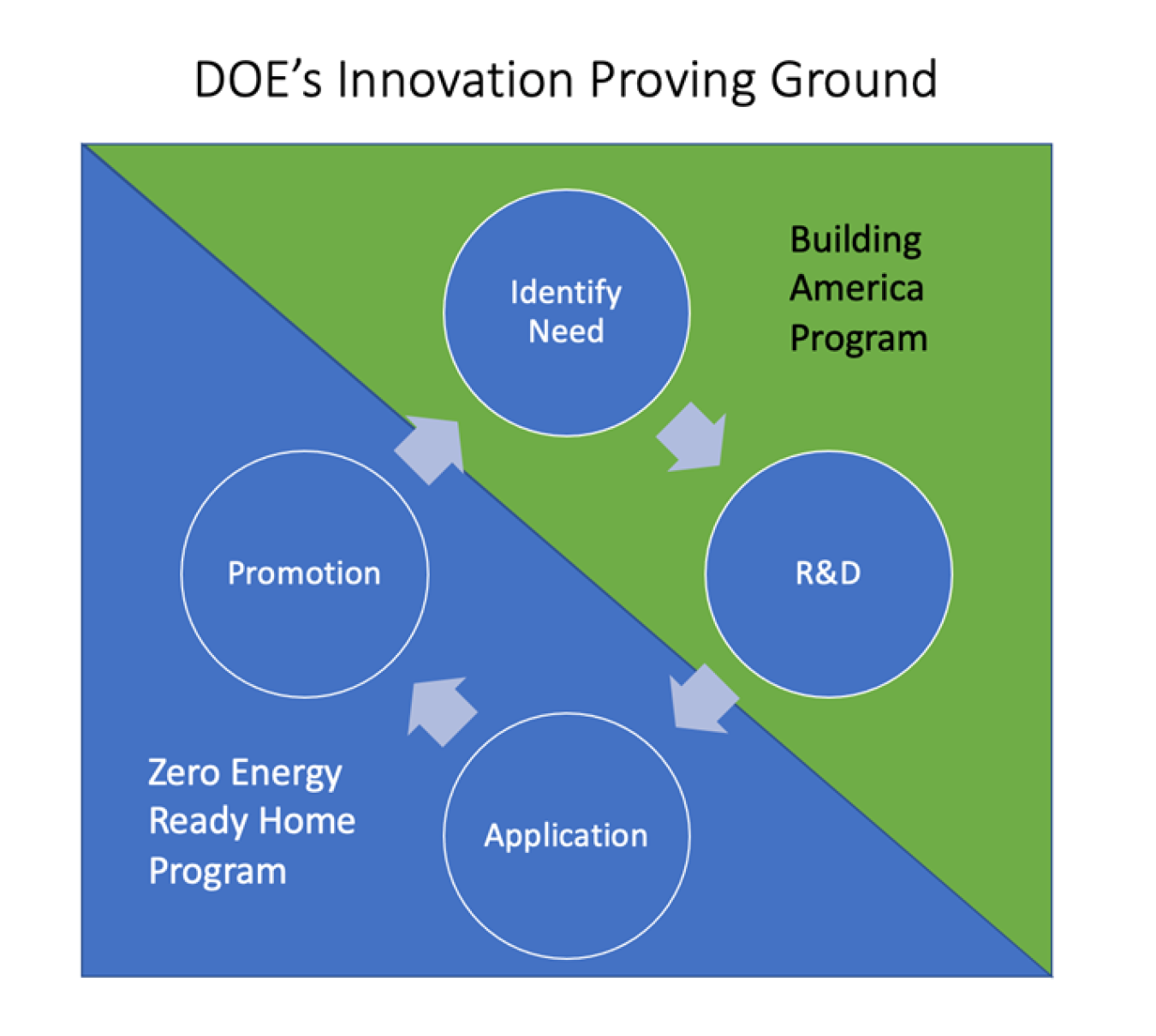Building America teams are helping ZERH builders to take innovation from design to market by serving as a proving ground.
June 2, 2022For more than 25 years, the Department of Energy’s Building America program has been a driving force behind technologies that improve the performance of homes. Partnering with industry, Building America teams comprised of scientists, engineers, architects, and market analysts identify innovative solutions to improve the energy efficiency, quality, durability, comfort, health, and affordability of homes.

Teaming up with another DOE program, Zero Energy Ready Homes (ZERH), Building America teams are helping ZERH builders to take innovation from design to market by serving as a proving ground. ZER homes are certified by third-party energy raters to ensure homeowners receive the energy savings, comfort, and health benefits expected with these high-performance homes. Leveraging the innovations from the Building America program, ZERH builders deliver more comfortable, quieter, healthier, and more durable homes to American homebuyers. Homeowners become satisfied customers with reduced maintenance costs and call backs, and builders differentiate themselves in a very competitive market. ZERH builders and their solutions, including innovative technologies from the Building America R&D process, are then featured on the Tour of Zero to show builders of more conventional homes what’s possible today at comparable price points.
One Building America innovation that ZERH builders used is a new aerosol sealing technology that Lawrence Berkeley National Laboratory (Berkeley Lab) originally designed as a solution to reduce HVAC duct leakage. After initial success with duct sealing, several Building America projects from 2012-2016 allowed research teams from UC Davis to test the applicability of the product in whole-house envelope sealing. A current Building America project is examining best practices for using the technology in existing homes, an area of the building industry that desperately needs more effective solutions to improve energy efficiency that minimize disruptions to homeowners. Read more about the aerosol sealing technology here.
Through these Building America research projects, aerosol sealing technology grew from an idea to improve duct leakage to a viable, market-ready product - AeroBarrier - that takes the guesswork out of the air-sealing process, providing a more efficient and precise way for both new and existing homes to meet today’s airtightness standards. Leading ZERH builder Mandalay Homes out of Prescott Valley, Arizona, became the first production builder to use the technology, starting with 115 homes in 2017 and 2018. In 2021, seven of the 29 homes recognized at the DOE Housing Innovation Awards used AeroBarrier. Mandalay’s founder Dave Everson says, “AeroBarrier has been instrumental to our energy-efficiency success and meeting our very high performance standards.”
The ZERH program and our leading builders are proud to work with the Building America program, often becoming early adopters of new technologies and showcasing to the rest of the building industry that these products are delivering exceptional performance at little to no additional cost. The ZERH program aims to deliver efficient, durable, healthy, and affordable homes to all Americans and the success stories out of the Building America program are the engine that helps drive us forward.
With more than 25 years of experience spurring innovation, the Building America program has proven itself as a world-class research program that has had dramatic impacts in accelerating industry adoption of efficiency innovations. A 2018 study by Industrial Economics Inc. shows that the program has saved Americans over 140 trillion Btu of energy and $689 million in energy costs from 2006-2015. Additionally, the authors estimate that Building America has provided homeowners with $186 million in benefits from avoided negative health impacts.

